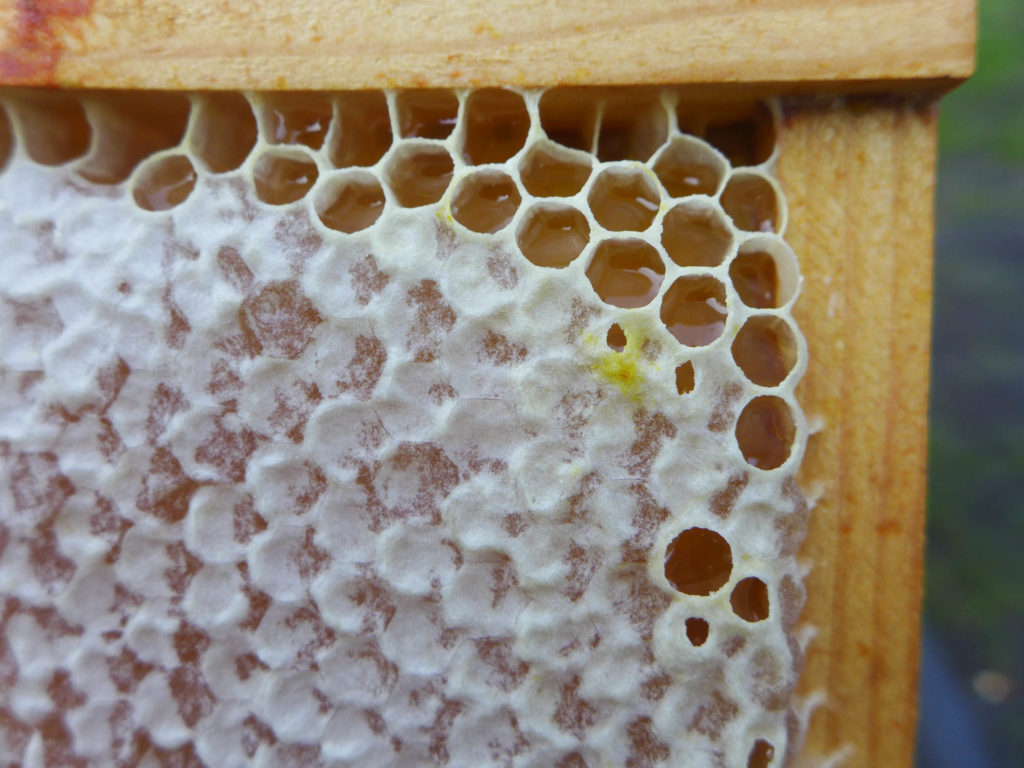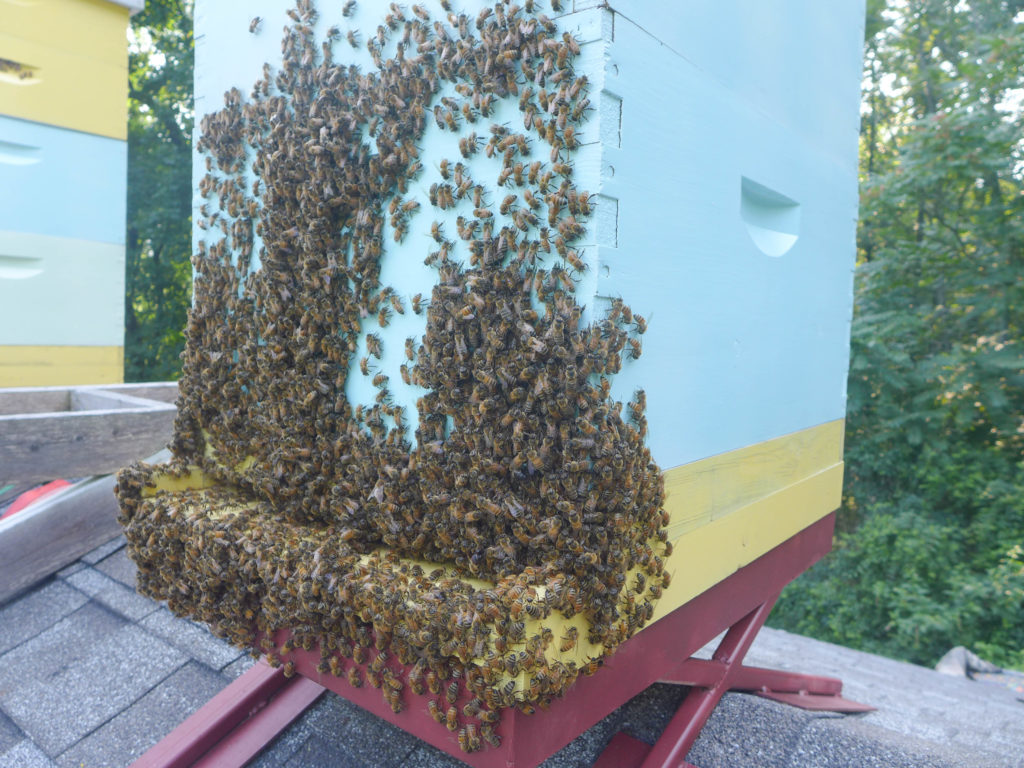The story of our lives: there are never enough hours in a day or enough days in a season.
We particularly feel the crunch when it’s time to introduce a new Ingredient of the Season. Here it is, time for summer’s ingredient, and I am definitely no where near finished with eggs. All that’s to say, expect a spattering of egg posts from now until forever (… when we actually find the time to slow down and write them).

But on with the show: This summer our focus will be on honey!
We’ve mentioned our brother’s hives more than once around these parts. Ever since he started producing honey and passing it around, we’ve been hooked. Sure, we always liked honey, but there’s something amazing about seeing the whole process in action. Watching the bees buzzing around the hive, getting that first taste when a bit of wax is scrapped off of the honey cells, and seeing the color of the honey change throughout the season as the bees visit different plants.
Of course, our favorite way to eat honey is straight up, but we’re excited to feature the ingredient in a few recipes this season. I’m sure there will be cocktails, definitely a dessert or two, and will challenge ourselves to use it in a few savory dishes.
Understatement of the year: The bees that produce honey are amazing. We’ll definitely discuss them in a second post, but today we’re just mentioning them in respect to honey production.

Honey Production
Honey is produced from flower nectar collected by honey bees. The bees drink in the nectar from flowers, some they consume to support their metabolic activity while flying, the rest of the nectar is stored in their “honey stomach”. In the honey stomach, enzymes begin breaking down some of the sugar in the nectar.
When collected from the flowers, the nectar has a water content of 70-80%. Once back at the hive, the bees regurgitate the nectar stored in their honey stomachs, and the hive bees get to work. Here’s where it really gets interesting. They hive bees then spend the next 20 minutes or so ingesting and then regurgitating the nectar while passing it from one bee to the next! While doing this, they use their mandibles to create bubbles from the regurgitated nectar, increasing its surface area and speeding up evaporation.
At this point the nectar has a water content of about 50-70%. It is placed in un-capped cells within the hive. The bees have the ability to regulate the hive’s temperature. They keep the honey processing area at a temp of around 95F and continue to flutter their wings to circulate air, both of these activities help to further evaporate water from the stored nectar. Once the honey gets to a water level of just 18%, it is finished honey. The bees can cap the cells, and there’s no worry about fermentation because of the low water content.

Honey Facts
As mentioned, the low water content of honey inhibits fermentation. In addition, it is believed that an enzyme in the stomachs of the bees is responsible for its antibacterial properties. When stored in a dry environment, honey can last for centuries, preserving any objects immersed in it.
Honey can be collected from domesticated bees within manmade hives or from the hives of wild honeybees. The average hive will produce 65 pounds of honey/year.
Honey will vary in color and flavor depending upon the nectar’s source. It is possible to buy single-source honeys, such as tupelo or orange blossom, but most often you will find wildflower honeys, made from the nectar of a variety of flowers.
Because honey is made from easily identifiable sugar molecules fructose and sucrose, there have been many attempts to produce and sell adulterated honey. Examples of adulteration include adding corn, cane, or beet syrups. The adulterated honey is cheaper to produce, less prone to crystallization. The first episode of the Netflix series Rotten goes into great detail about the business of honey adulteration.
Honey is believed to have valuable uses in medicine. Its antibacterial properties make it useful as a skin dressing for burns and after surgeries, in both cases speeding up healing times.
There are 8000 year old cave drawings in Valencia, Spain showing humans collecting honey. And there are examples of its use from Ancient times throughout the Middle East, China, and in Mesoamerica.

~
The photographs throughout this post are from a visit to our brother’s hives. If you’re lucky we’ll interview him about his beekeeping hobby. Don’t expect a novel, he’s a man of few words.
